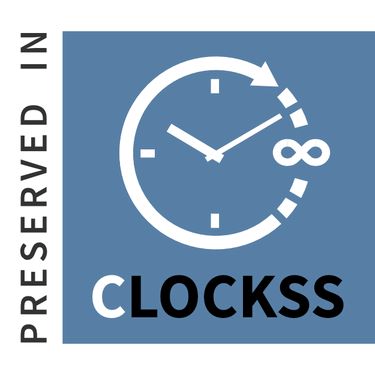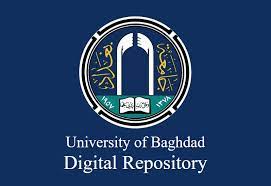Comparison of some physical abilities and indicators of oxygen functional performance and BMI ratio and their relationship to the defensive movement speed for handball and basketball players
Keywords:
Defensive movementAbstract
Handball and basketball are games that characterized by the performance of the requirements and duties of the defense movements based on the distinct capabilities of the speed of movement, especially in the defense movements, which requires anaerobic, physical capabilities and skill is relatively variable. The problem of research, it is through the experience of the researchers that they are professors and coaches of the games and the importance of the use of tests to evaluate the levels of players in the collective games periodically and continuously as one of the steps that determine the success and evaluation of the coach and players together for the purpose of showing the difference and relative proportion in some physical blocks and indicators of functional performance and body mass ratio. Slower moves in closing defensive gaps and fluctuating player performance may also be caused by the inability of the body's functional organs and the physical abilities of Wassit University players to play handball and basketball. The objective of the research is to identify some physical abilities, functional and non-functional performance indicators, body mass index (BMI), and correlation between physical abilities, non-oxygen functional parameters and body mass index (BMI). The researchers used the descriptive approach and the method of comparative study and correlative relationships. The researchers identified the research community and its sample of the players from the Wassit University of Handball teams. The total number of the sample was (20) players, (10) players per game for the academic year (2017-2018. .After the tests were applied and processed statistically
The researchers concluded several conclusions, the most important of which were - the best basketball players in the long jump tests of stability, the three left and right leg testers within the physical abilities, the 30 sec- step tests and the 10-sec step-test in the non-occupational performance indicators. Handball was the best choice in the test running and jumping 50m within the physical abilities. There were significant correlations between the defensive movement and the physical abilities (the explosive force of the legs, the speed characteristic of the right and left leg, showed significant correlation relationships between defensive moves and between functional and indicators of anaerobic performance (tactics and phosphate) for handball and basketball players.
One of the most important recommendations is to take advantage of the results achieved to develop the anaerobic and physical abilities of the players for their importance in the defensive moves of handball and basketball players.
- The need to use training programs that contribute to the reduction of the amount of fat stored in the body to maintain body weight when the implementation of training curriculum to suit the requirements of the game physically and skillfully.
References
Ahmed Aribi: Handball and its Basic Elements, 1st Edition, (Tripoli, Al-Fateh University Press, 1998).
Amira Hassan Mahmoud, Maher Hassan Mahmoud: Modern Trends in Sports Training Science, 1st Edition, (Alexandria, Dar Al-Wafa for Printing and Publishing, 2008).
Abu Al-Ala Ahmed Abdel-Fattah: Sports Biology, 1st Edition, (Cairo, Atwah Printing House, 1982).
Abu Al-Ala Ahmed Abdel-Fattah: Sports Biology, (Cairo, Dar Al-Kutub Al-Arabi, 1998).
Mohamed Sobhi Hassanien: Measurement and Evaluation in Physical Education and Sports, Vol. 1, 3rd Edition, (Dar Al-Fikr Al-Arabi, Cairo, 1995).
Mohamed Sobhi Hassanien, Ahmed Kasra: Encyclopedia of Applied Sports Training, 1st Edition, (Cairo, Center for Book Publishing, 1999).
Mohamed Nasr El-Din Radwan: Methods of Measuring Physical Effort, 1st Edition, (Cairo, Center for Book Publishing, 1998).
Qasem Mohamed Hassan Al-Khaqani: Training Methods for Explosive Power and its Impact on Some Biomechanical Variables During the Take-Off and Achievement Phases in High Jump, (Doctoral Thesis, College of Physical Education, University of Baghdad), 2001.
Qasem Hassan Hussein: Physiology: Its Principles and Applications in Sports, (Mosul, Dar Al-Hekma for Printing and Publishing, 1990).
Kamal Darwish and Others: Physiological Foundations of Handball Training, 1st Edition, Cairo, Center for Book Publishing, 1998.
Amar Darwish Al-Nadawi: The Impact of a Proposed Training Program on Developing the Quality of Endurance Strength Distinguished by Speed in the Accuracy of Performing Some Basic Skills for Handball Players, (Doctoral Thesis, College of Physical Education, University of Baghdad), 2004.
Yousef Lazem Kama Sh: Physical Fitness for Football Players, (Amman, Dar Al-Fikr for Printing and Publishing, 2002), p. 149.
Gene M. Adams: Exercise Physiology Laboratory, V.S.A., K.W.M.C. Brown Publisher, 1990, pp. 105-106.
Downloads
Published
Issue
Section
License
Copyright (c) 2019 Modern Sport

This work is licensed under a Creative Commons Attribution 4.0 International License.















